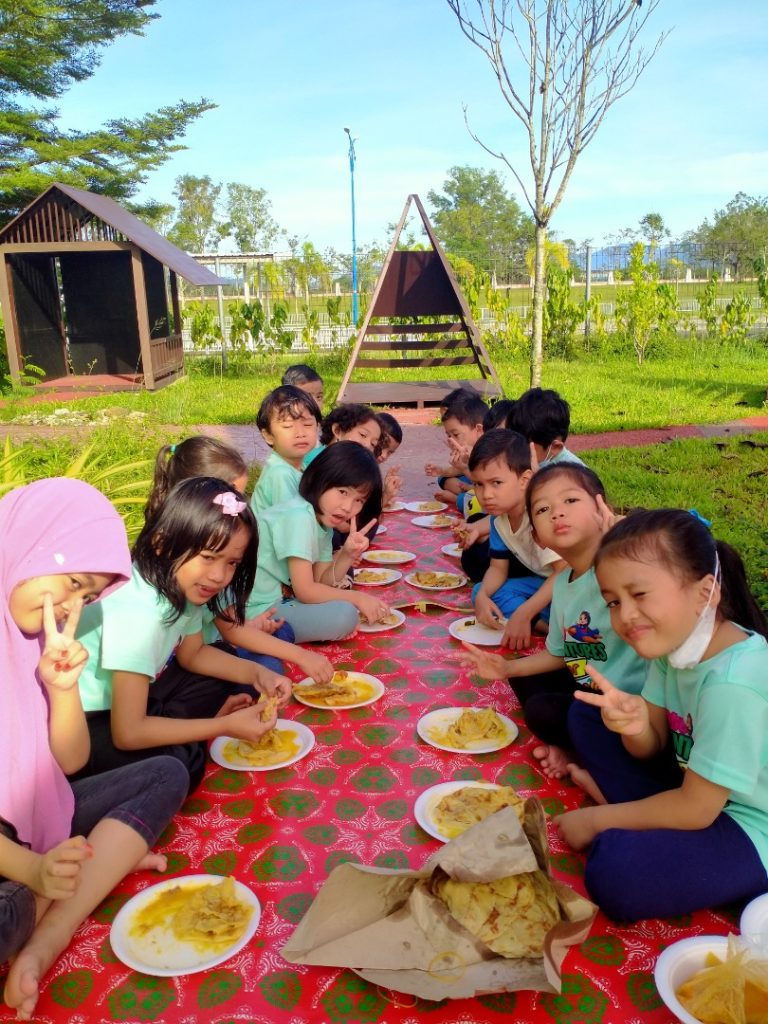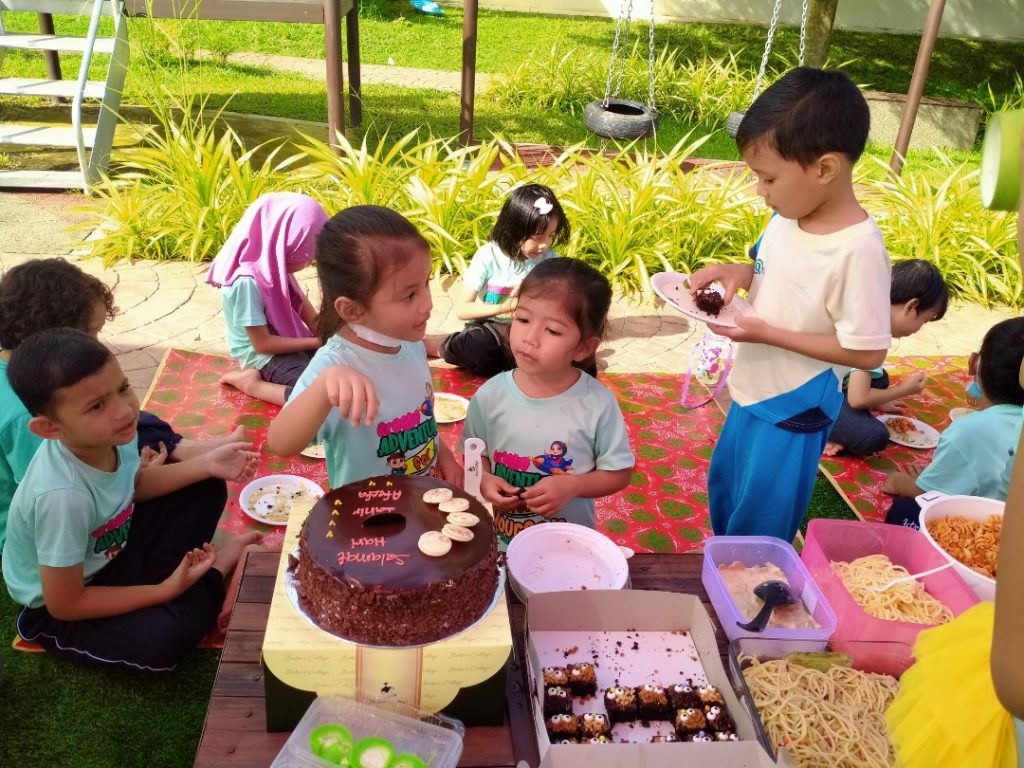
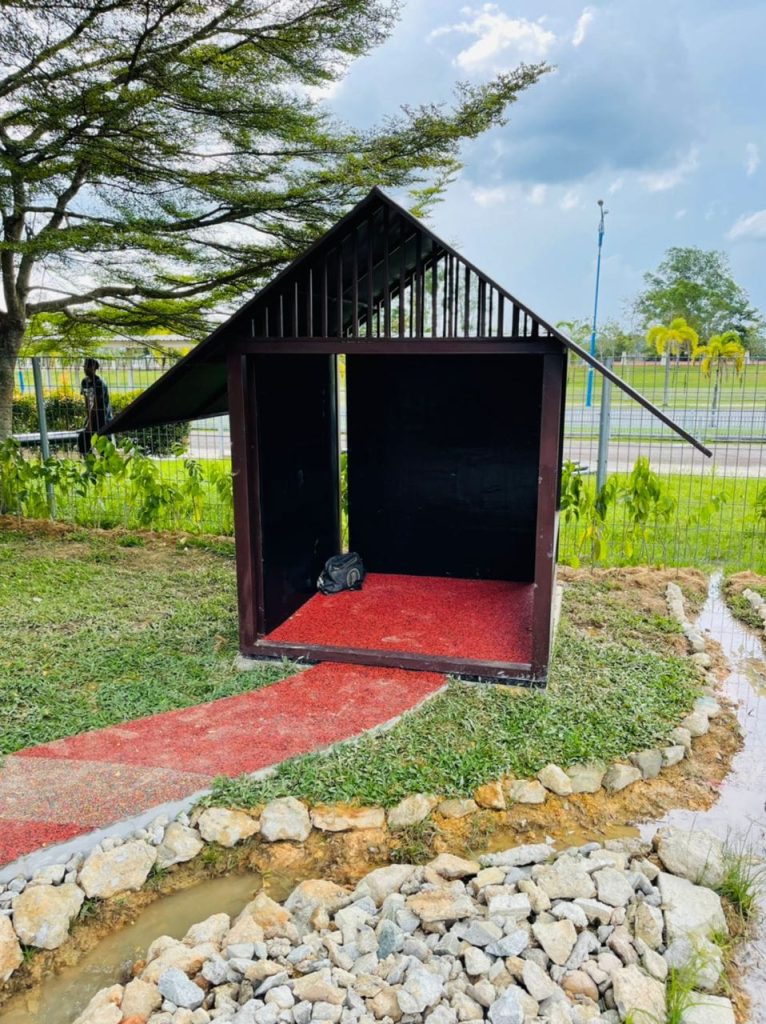
Why It’s Interesting:
The small shelter with an open design allows children to use their imagination. It can be anything they want—a playhouse, a fort, or a quiet resting place.
The path and surrounding natural elements (rocks, grass, and a shallow stream) connect children to nature and provide opportunities for sensory exploration.
Activities:
Imaginative Play: Children can role-play, turning the shelter into a house, shop, or hideout.
Nature Exploration: The stones, grass, and water offer tactile experiences. Kids can walk on the different textures, touch the water, or collect small rocks.
Rest or Gathering Spot: The shelter could also serve as a place for kids to sit down and rest, have a snack, or socialize with friends.
Benefits:
Encourages Imagination and Creativity: The open design invites unstructured play, which is vital for creativity.
Sensory Development: Walking on different surfaces and interacting with water enhances sensory awareness and motor skills.
Cognitive and Social Development: Role-playing fosters social interaction, problem-solving, and communication.
Why It’s Interesting:
This structure is highly interactive, offering a variety of physical challenges. The bridge with hanging ropes, climbing walls, and a tire swing introduce a sense of adventure.
The nautical theme (with the lifebuoy) and variety of structures, such as nets, tunnels, and climbing walls, create a dynamic environment for kids to explore.
Activities:
Climbing and Balancing: The net bridge and climbing walls offer opportunities to improve balance, strength, and motor skills.
Swinging: The tire swing encourages balance and coordination while also giving children the thrill of movement.
Obstacle Navigation: Children can navigate through tunnels, climb up platforms, and cross the bridge, simulating an obstacle course.
Benefits:
Physical Fitness: Climbing, swinging, and balancing are excellent for developing strength, endurance, and coordination.
Problem-Solving and Risk Management: Children can figure out how to approach each obstacle, improving their critical thinking and decision-making skills.
Confidence Building: Conquering physical challenges like the bridge or climbing wall boosts self-esteem and a sense of accomplishment.
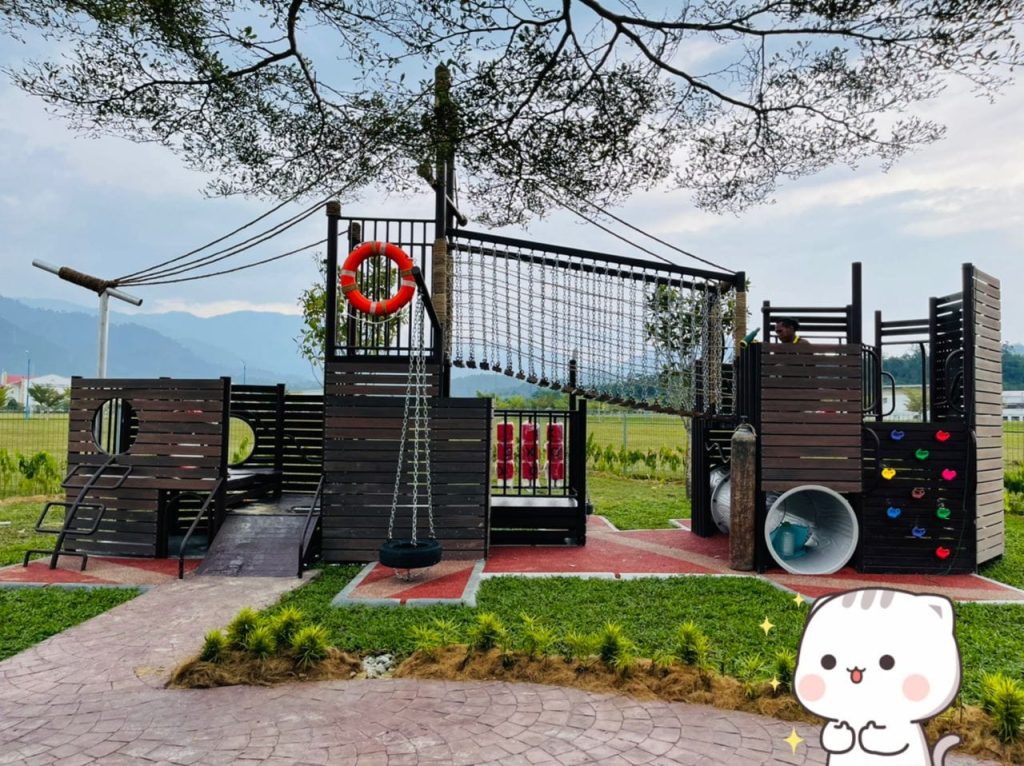
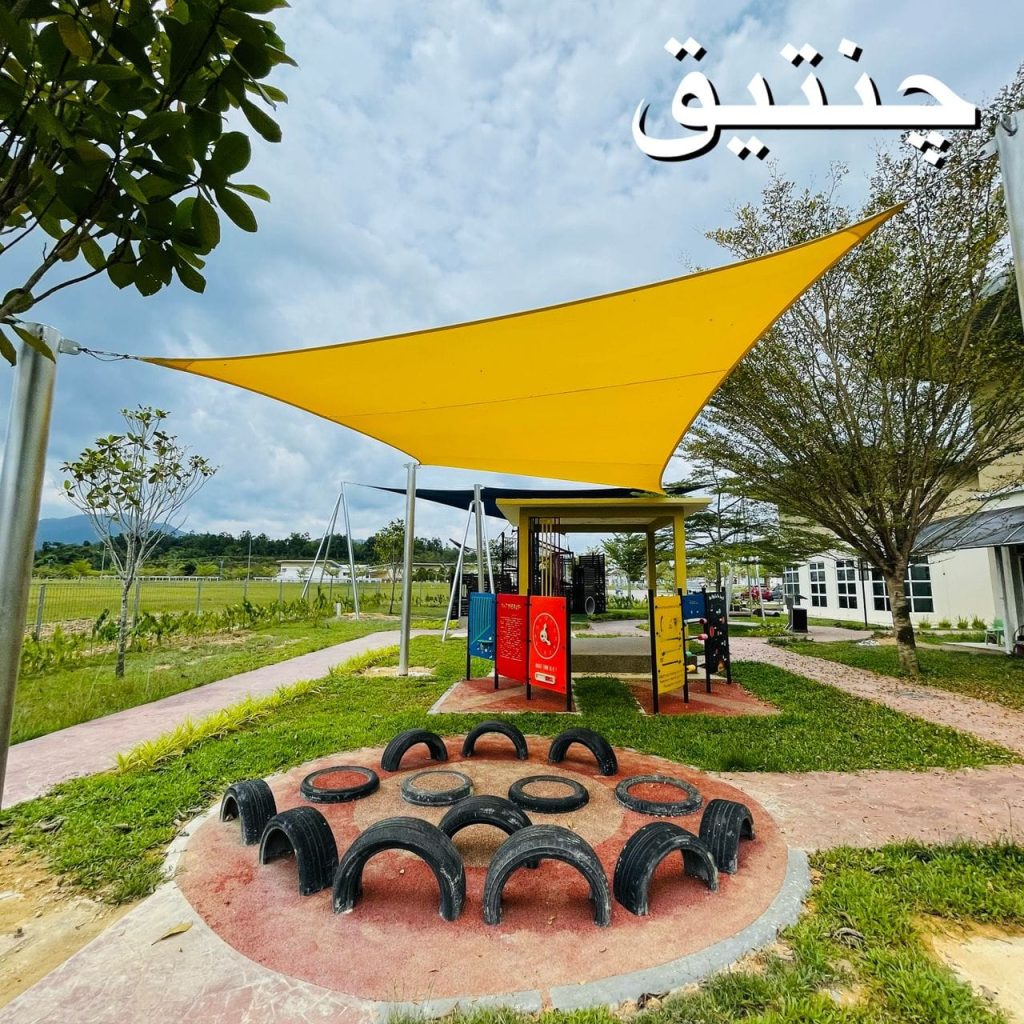
Why It’s Interesting:
This area is shaded, making it a comfortable space for children to play during sunny or hot weather. The bright yellow canopy creates an inviting and cheerful atmosphere.
There are tire structures, which could be used in multiple ways, such as jumping over or climbing on, and play panels that encourage interactive play.
Activities:
Climbing and Jumping: Kids can jump over the half-buried tires or use them as a balance challenge, enhancing their physical coordination.
Interactive Games: The colorful play panels may include educational games, like puzzles, numbers, or sensory-based activities, keeping children engaged both physically and mentally.
Group Play: The setup allows for multiple children to play together, encouraging teamwork and cooperative activities.
Benefits:
Gross Motor Skill Development: Climbing and jumping enhance balance, coordination, and muscle strength.
Social Skills: The space encourages group interaction, fostering social development and teamwork.
Cognitive Engagement: The play panels can help with problem-solving and learning colors, shapes, or numbers, providing mental stimulation alongside physical activity.
Why It’s Interesting:
The play area features a combination of natural wooden logs and structured play equipment. The logs serve as balance beams while the brightly colored tunnels and climbing slopes attract children’s attention. The area is covered by a large sail-like canopy, providing shade and ensuring comfort during playtime.
Activities:
Climbing and Crawling: The sloped climbing structure with steps challenges children to use their muscles and balance.
Balancing on Logs: The wooden logs offer a fun balance challenge, promoting coordination and physical fitness.
Crawling through Tunnels: The tunnels enhance spatial awareness as children crawl through and explore their surroundings.
Benefits:
Physical Coordination: Climbing and balancing on logs help develop motor skills, balance, and strength.
Imaginative Play: The simple layout can inspire imaginative play, as children turn the logs into obstacle courses or pretend they are walking through a jungle.
Sensory Development: Different textures, like the grass and wood, provide a tactile experience that benefits sensory awareness.
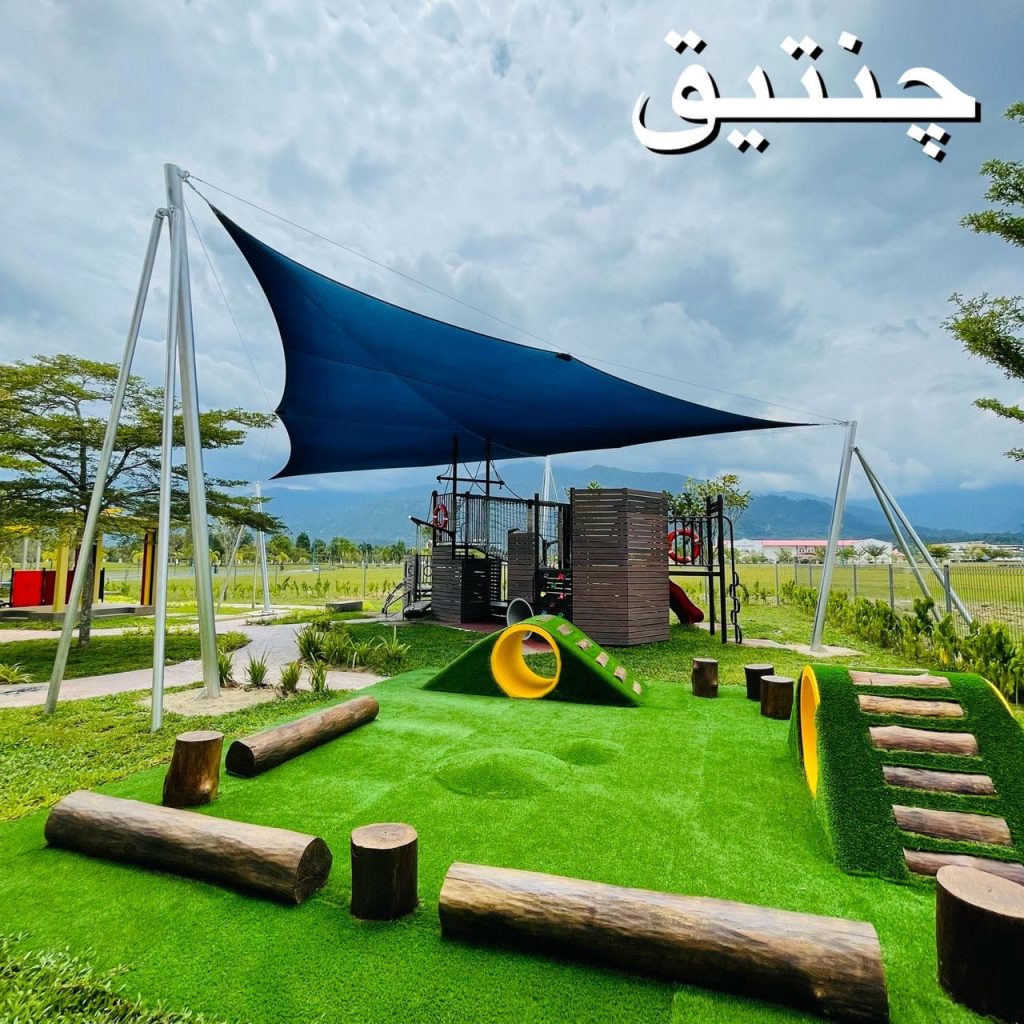
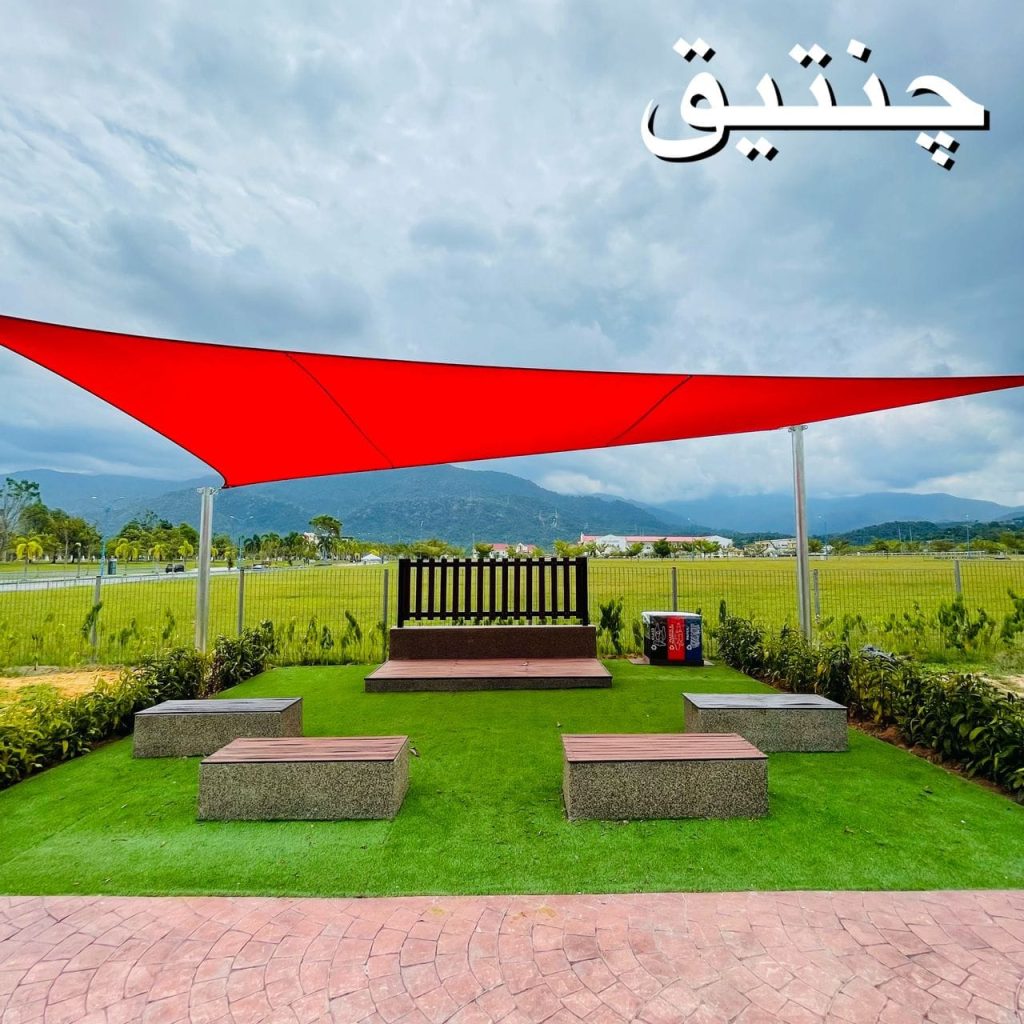
Why It’s Interesting:
This open seating area is shaded by a red canopy, making it a comfortable space for group activities or resting. The seating arrangement encourages social interaction and provides a versatile setting for group discussions or outdoor classes.
Activities:
Rest and Socializing: Children can rest here after physical activities or use the space for group storytelling sessions.
Outdoor Learning: Teachers can organize outdoor lessons or group discussions, fostering learning in a relaxed environment.
Picnic Area: It also serves as a picnic spot where children can enjoy snacks and meals together.
Benefits:
Encourages Social Interaction: The design supports group activities, which help children develop communication and cooperation skills.
Rest and Relaxation: After physical play, this area provides a quiet spot for rest and recovery, ensuring children stay refreshed.
Outdoor Learning: The open space can be used for outdoor classes, encouraging creativity and learning in a natural setting.
